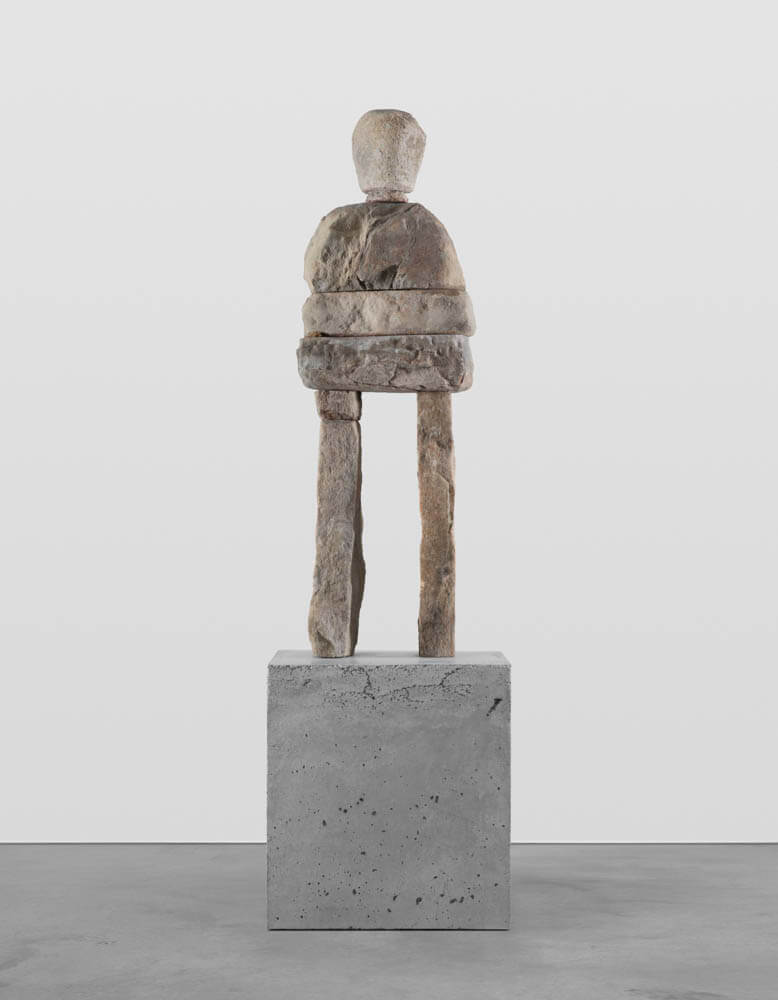
The Thankful soul is grateful for what they have. Someone who appreciates the small things.
Explore the works below. Before expanding the text, think to yourself:
What do you see?
What do you feel?
What might it be addressing?
What questions do you have?
Do you like it? Why or why not?
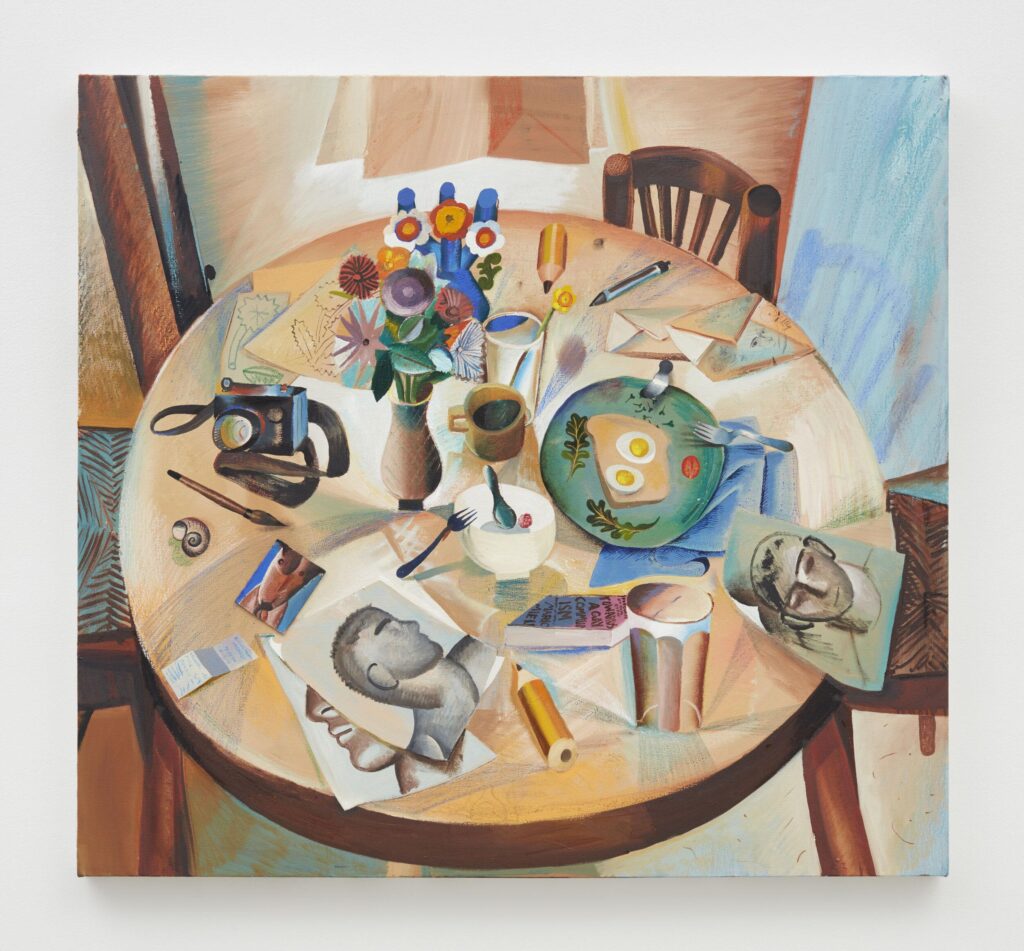
Expand to learn more
This is the painting My Meal (2019) by Louis Fratino. My Meal depicts a table in a manner similar to the cubists featuring an array of items. This piece speaks to his cubist influence with warped scaling and the classic tableau of Cubist painting.
Fratino’s meal is made up of much more than food. Alongside the plate of eggs and the mug of coffee are flowers, drawings, letters, and other objects of dedication, documentation, and consumption. There are the objects from which he creates (pencil, paintbrush, camera) and objects from which he finds inspiration (photos, the book, letters). This painting takes on a similar role of the commonly-seen-on-instagram birds-eye view of the dinner table, which often aims to project a feeling of satisfaction around the contents of the table, even beyond the food itself. Fratino is thankful for more than just his meal—he thinks of his relationships, his work, and the intimate settings from which these feelings can come to life.
About the artist
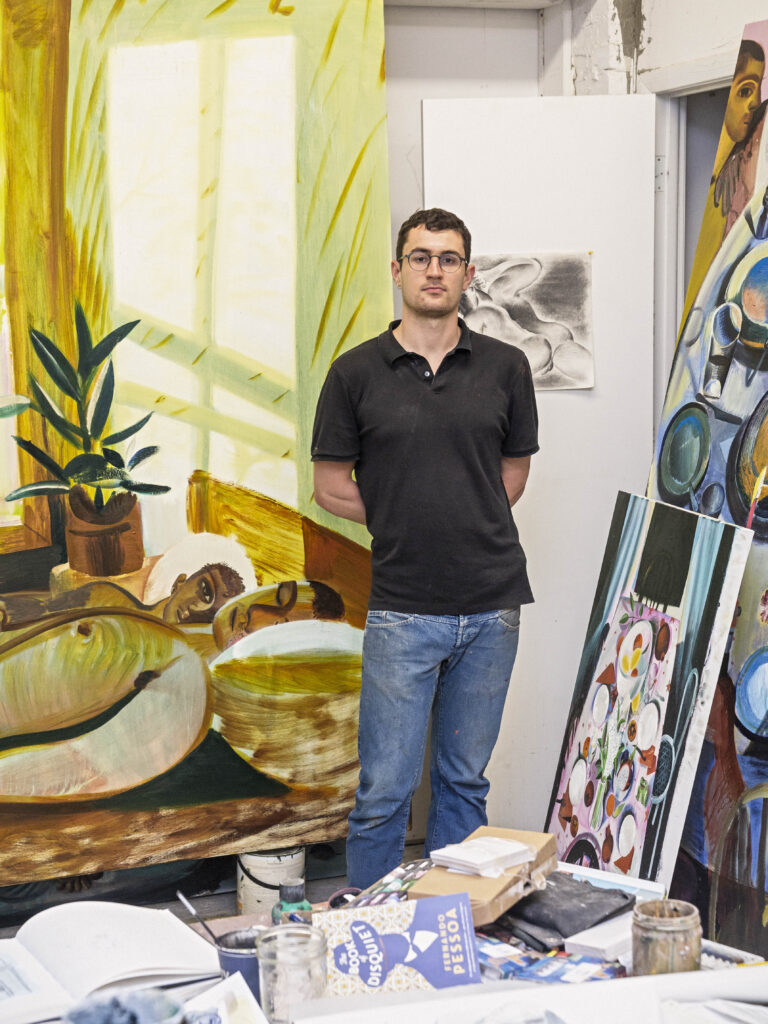
Louis Fratino (b. 1993) is an American artist who works primarily in figurative painting. Fratino is a gay man who uses his art to represent the unseen, the interiors, and the private lives of himself and the men he interacts with. He is considered to be part of a wave of artists reimagining the male gaze through a queer lens.
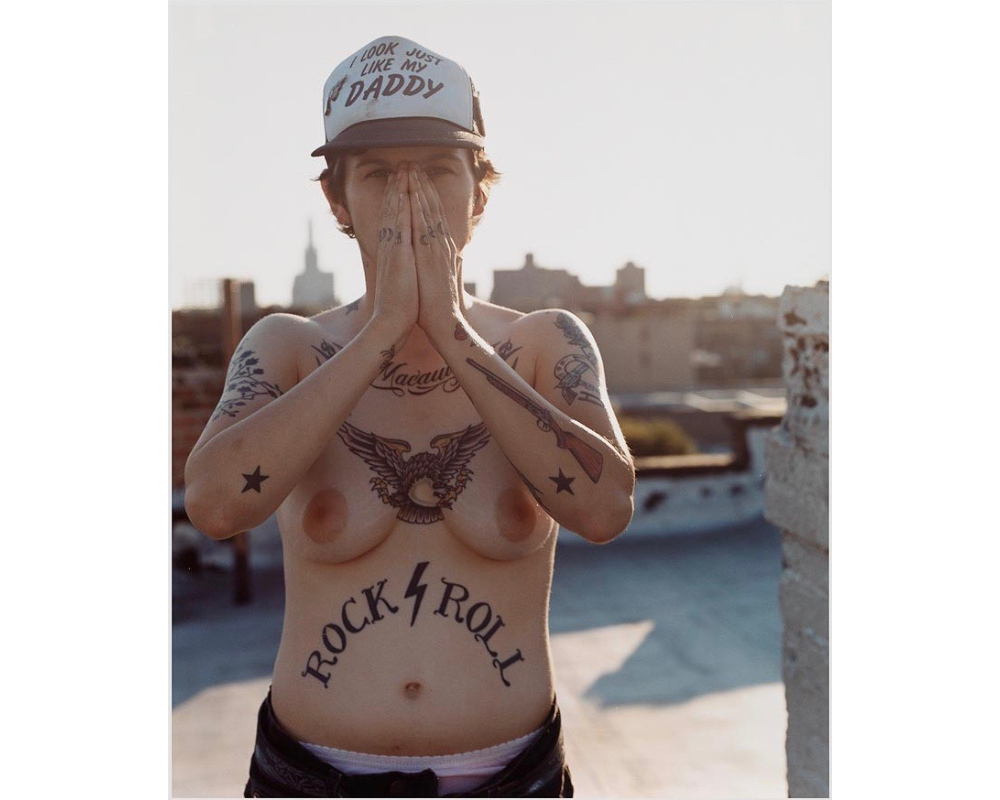
Expand to learn more
This is the photograph I look just like my mommy (2005) by Cass Bird. The photo features Bird’s friend Macaulay standing shirtless and wearing a hat that says “I look just like my daddy”. Macaulay’s face is covered, but leaves their breasts exposed. Bird encourages us to question our ideas of gender and how gender is presented on the body. The title and Macaulay’s hat place us at a crossroad. Does Macaulay look like their mother? Their father? Does it matter?
Photography cannot exist without the relationship between the photographer and the photographed. For Bird, there is a profoundness to this relationship. I find the vulnerability, both of the subject and the artist, to be hinged on a feeling of gratefulness. Additionally, relationships between queer children and their parents can be fraught, and there is feeling of thankfulness that comes with the recognition of familial lines, particularly when they manifest physically.
About the artist
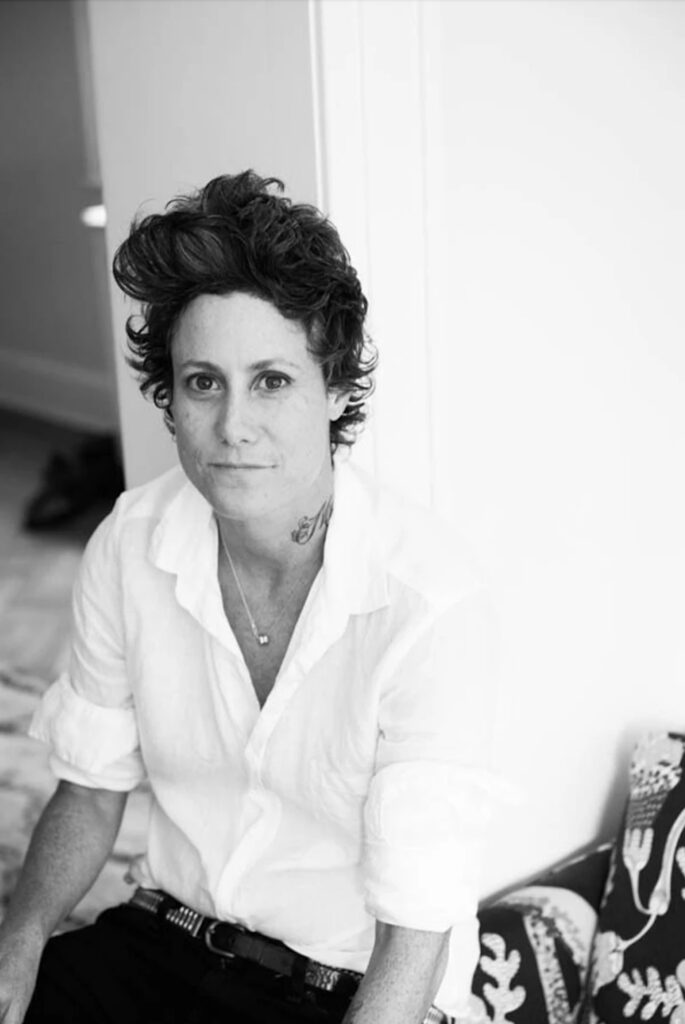
Cass Bird (b. 1974) is an American photographer who is best known for fashion and celebrity photography, but has many works categorized more in the “art” category of photography. She is considered one of the foremost portraitists of contemporary American photography.
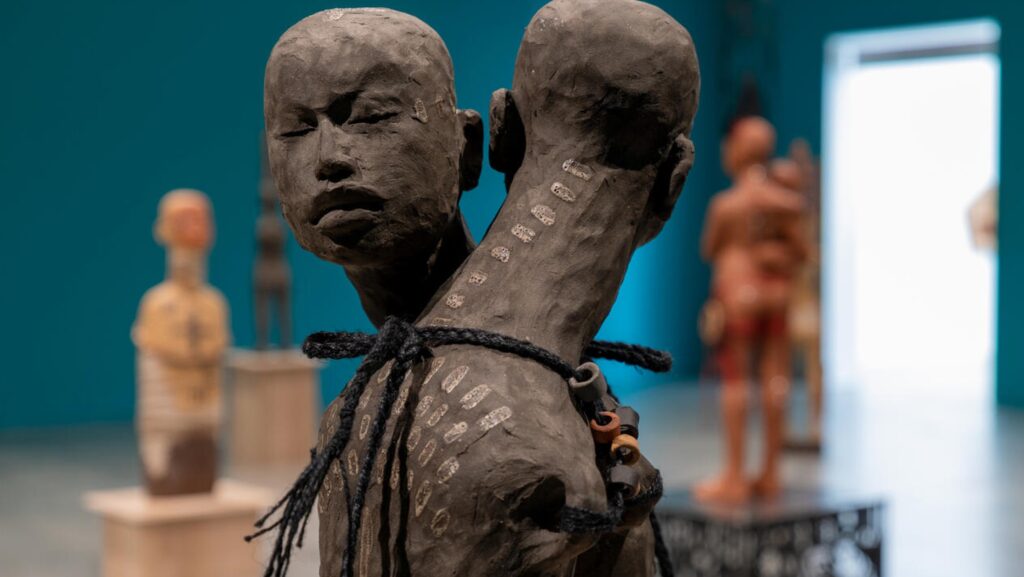
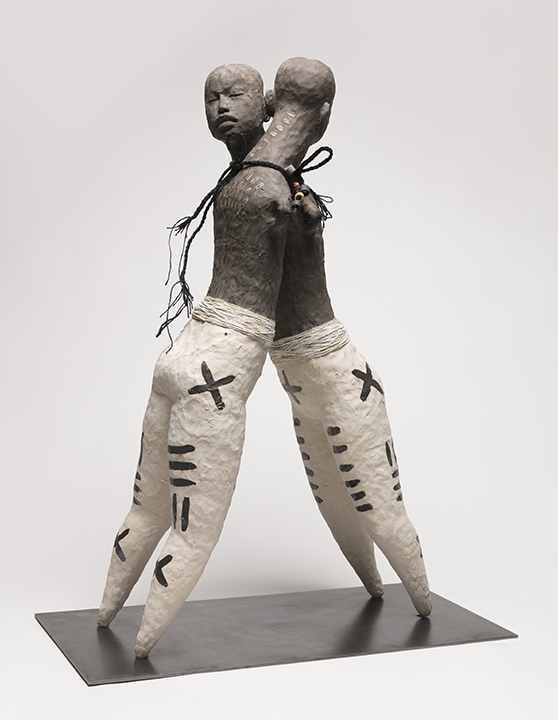
Expand to learn more
This is the sculpture, Brace (2022), by Rose B. Simpson. Brace depicts two androgynous, matching figures, leaning against each other. At their necks, their heads turn, each looking out over the other one’s back. Neither has any feet to keep them upright, rather, they rely on each other to stand. The title, “Brace” references their need to lean against each other to keep from falling. As though together they are stronger than apart.
The figures have no arms. Rather, twine comes out of holes where their arms would be, wrapping around their necks, keeping them together. For Simpson, it is a reminder that vulnerability and trust in love are necessary in relationships. For me, I wonder about what it means when they are inevitably forced to separate.
About the artist
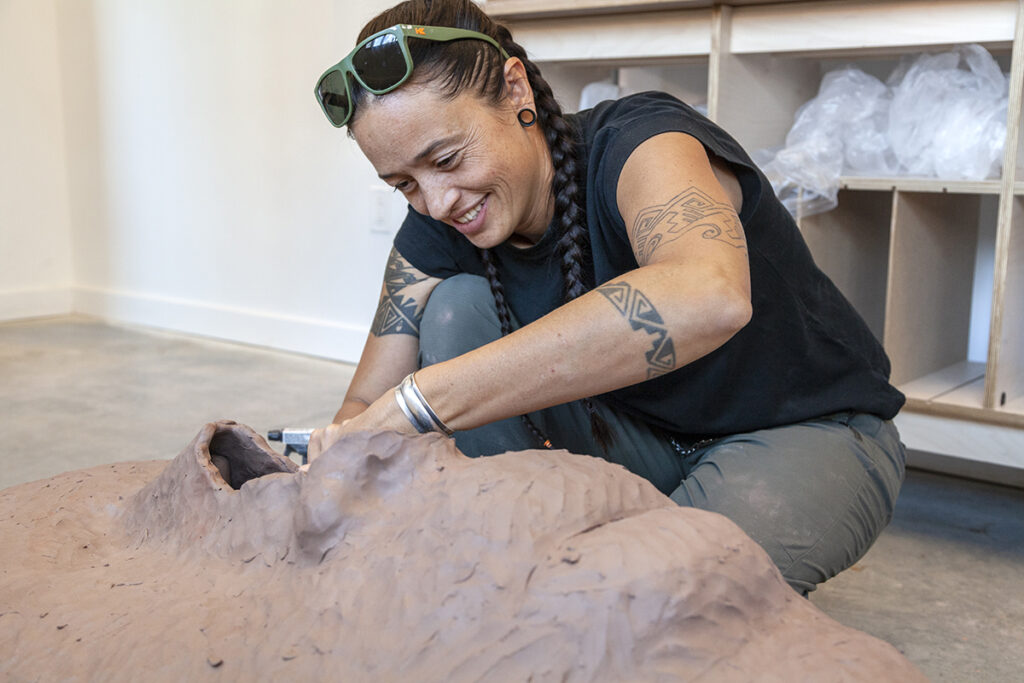
Rose B. Simpson (b. 1983) is a Tewa (Santa Clara Pueblo) sculptor who works primarily in ceramic. Her works often approach the past, present, and future as structured around the matrilineal line. She herself comes from a line of women ceramic artists. Her style is recognizable in the ‘Slap-Slab’ technique in which she assembles her pieces using small slips of clay, leaving the pieces and her own motions—brushstrokes, fingerprints, markings—evident and visible. Her figures are often post-apocalyptic, considering Native American survival in the wake of the climate emergency.